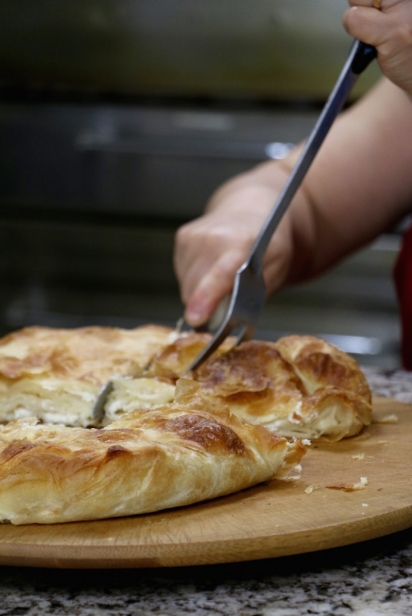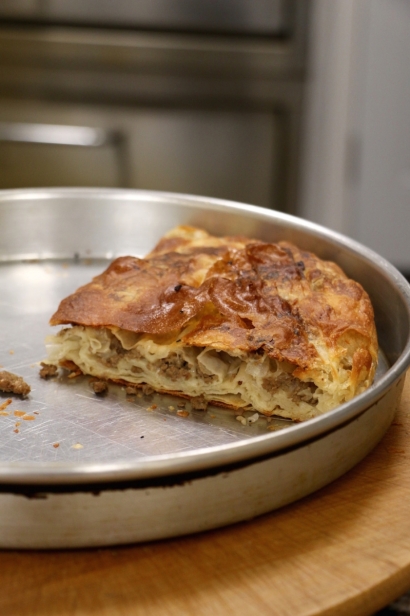Taking a Bite of History At Dukagjini Burek
Marjan Kolnrekaj, owner of Dukagjini Burek restaurant on Lydig Avenue in the Pelham Bay section of the Bronx, may not know it, but he just might be the inspiration for modern behavioral economists who coined the phrase “choice architecture,” the act of increasing consumers’ satisfaction by limiting their choices. At Dukagjini, hungry customers can choose from only three items: a beef-filled burek, a spinach and feta burek and a ricotta cheese burek. If 21 years of doing business this way is an indicator, then Dukagjini has certainly satisfied its consumers.
Burek’s history, depending on your source, dates back to the Ottoman Empire or to the Eastern Roman Empire. Marjan could not say which side of that debate he stood on, but he was certain that the popularity of burek throughout the Balkan states shows no sign of abating in its new home here in the Bronx.
“This is not just for Albanians,” he says. “Everyone eats my burek.”
Marjan learned to make burek from his father and grandfather, who were bakers and followed in their trade. After 10 years of working as a baker on Arthur Avenue, he opened Dukagjini, named for his home province in his native Kosovo, and began this single-item enterprise.
Dukagjini’s version of this ubiquitous dish is a 12-inch round pastry that gets cut into triangular quarters. Other varieties of burek representing countries throughout Eastern Europe and the Levant include different fillings and forms. Burek can be shaped like cigars, or in spirals, or in rectangles topped with sesame seeds. To make his burek, Marjan hand-spins the dough until it is stretched paper thin. It is then folded into a square. A second layer is placed on top of the first layer. Next, a layer of filling is added, then another layer of dough and another layer of filling. A final layer of dough tops off the completed pastry and it is fitted into its circular, 12-inch pan until it is time to be baked in the oven. The final product emerges golden brown, puffy and flaky.
“I always use the best ingredients and my burek is always fresh,” says Marjan. “Once you taste my burek, I know you will come back. People eat my burek for breakfast, lunch or dinner. I have customers who come in twice a day,” he says.
Meeting the needs of hungry, on-the-go customers and of those who have more leisure, burek’s versatility may be the reason for its popularity and Marjan’s success. While one can sit and eat it with a knife and fork, the preferred style is to grab it with your hands and, if you choose, dip each bite into a fresh, tart, homemade yogurt. “That’s how you get the real taste,” Marjan adds.
Biting into a burek, one easily imagines sharing in an ancient food experience. Dukagjini is the delicious bridge across the centuries, offering its single specialty for modern diners.
758 Lydig Ave, Bronx, NY






